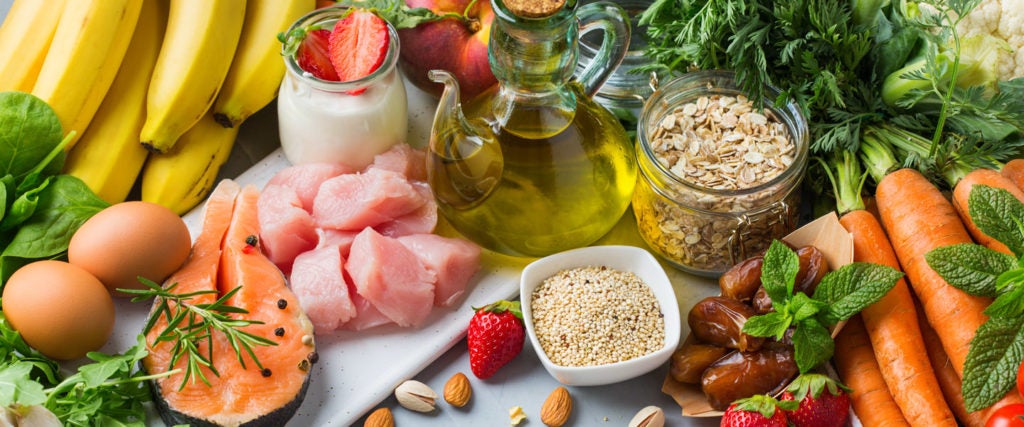During a pitch for an eco-friendly chicken sausage company on a recent episode of Shark Tank, Mark Cuban uttered perhaps the most Mark Cuban thing ever: “If I was a flexitarian…” Of all the sugar-free, plant-based nonsense from celebrities about their diets, this was by far the most cringeworthy nutritional term I’d ever heard. It wasn’t until I looked up what it meant that the painful reality set in: Oh shit, I’m a flexitarian nightmare.
No, this doesn’t mean I eat cannibalized bro muscles or live off of lat spreads, it just means that my diet is primarily plant-based, with some flexibility to indulge in meat when I want to without making a big deal about it. The term flexitarian was coined in 2008 by Chicago-based dietitian Dawn Jackson Blatner, who astutely realized that most Midwesterners couldn’t be confined to a strictly vegan or vegetarian diet, but wanted to enjoy the health and environmental benefits of finding a better balance between that and treating every day like a hot-dog eating contest.
Although it’s been around for a while, flexitarianism has become increasingly popular recently, as people have started to move away from a restrictive diet culture and toward more intuitive ways of eating. A national survey from August 2020 found that 53 percent of consumers identify as omnivorous and 36 percent think of themselves as flexitarians, compared to only five percent of consumers who were vegetarian and three percent who were vegan.
“It’s vegetarian-forward but without all the rigidity of being vegetarian or vegan,” explains pediatric nutritionist Keith-Thomas Ayoob, who’s also an associate clinical professor emeritus at the Albert Einstein College of Medicine in New York. Ayoob and many other experts prefer a more fluid approach to nutrition because more people can be consistent with it. It’s especially good for parents who want to model healthy relationships with food because it’s not about certain foods being bad, but about fruits, vegetables, beans, nuts and grains being really, really good. “I like this approach,” Ayoob tells me. “Jackson Blatner gave people permission to not have to be rigid about their eating style.”
Flexitarians can eat anywhere from 9 to 26 ounces of lean meat like beef, pork, lamb or poultry and dairy (ideally in the form of yogurt and kefir, but cheese is allowed) and eggs, while limiting sugar as much as possible. There are three levels of being a flexitarian, though: Beginners start off going plant-based two days a week and eat about 26 ounces of meat or poultry, whereas advanced flexitarians go vegetarian three to four days a week, consuming 18 ounces of meat or poultry comparatively. Finally, expert-level flexers limit their meat and poultry intake to twice a week, or around 9 ounces.
“It’s very plant-based, but it’s not plants-only. It’s loaded with fiber, and encourages a wide variety of vegetables, plant proteins and beans and nuts,” Ayoob says. “Plus, it doesn’t dismiss the unique value of high-quality animal foods, including fish.”
The flexibility of this diet tends to translate into more affordability compared to veganism as well, which again, makes it easier for the average person to stick with. All of this adds up to why the flexitarian diet was ranked as the number one “Best Weight-Loss Diet” and the number two “Best Diet Overall” by U.S. News & World Report this year. (The Mediterranean diet came in first place overall.)
I admit, when I looked up many of the meal plans for the flexitarian diet, I let out a hearty “hell yeah,” at the idea of eating salmon bowls, lentil soups, lettuce wraps, fresh-fruit smoothies, English muffins, apples, peanut butter and so much more. Sure, it’s a slightly healthier menu than I normally stick to at home, but the flexitarian diet seems like a goal that’s entirely attainable and enjoyable.
That said, making healthy lifestyle changes is never easy, and the flexitarian diet does call for more at-home cooking, “but that might be an advantage now that people have had to become used to cooking and eating at home more,” Ayoob notes. “The only other possible disadvantage is, being plant-focused, you’ll need to step up your consumption of fruits, vegetables and beans,” he adds, stressing that “a plant-forward eating style doesn’t mean eating more homemade sourdough.”
But for all those challenges, the flexitarian diet is still easier to maintain than most other diets, so much so that many people don’t consider it a diet at all, but more of a “lifestyle.” And though that sounds like an insufferable way to put it, the beauty of being a flexitarian is that you don’t have to talk about it at all, because you have the freedom to deviate from your diet at a barbecue, instead of being dubbed “impossible burger guy.”
That’s probably why I’ve lived a flexitarian life for so long without even knowing there was such an unnecessarily buff word for how I eat. And unlike quieter flexitarians, I’m coming out of quarantine ready to ruin dinner parties with it.

